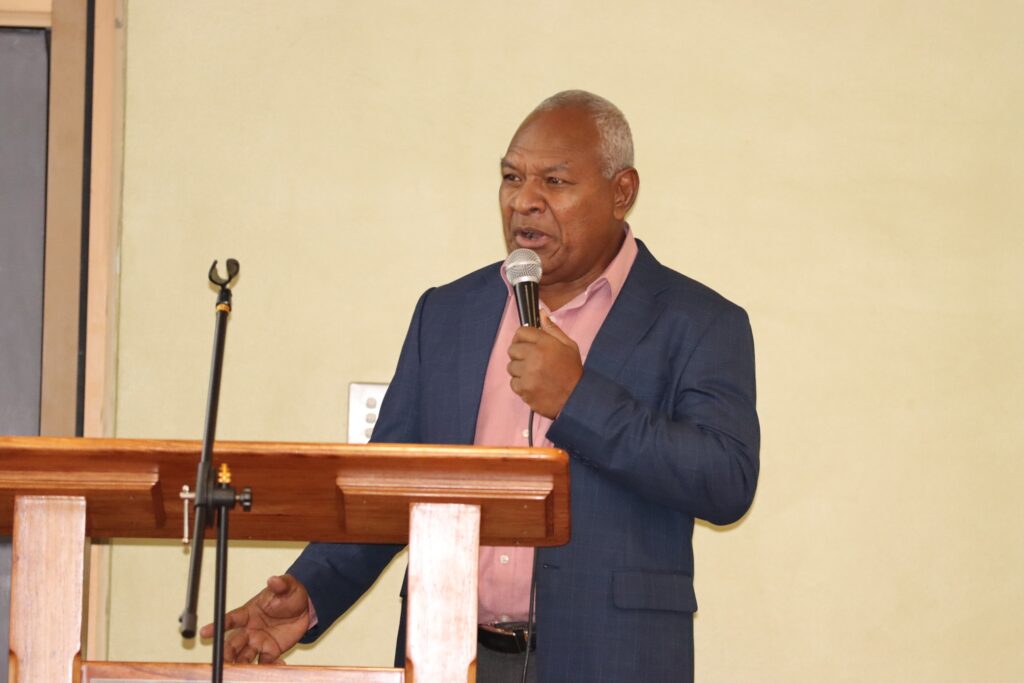Lae, 10 April 2025 — The Managing Director of Kokonas Indastri Koporesen (KIK), Mr Allan Aku, has delivered a compelling address on the state of Papua New Guinea’s coconut industry, calling for urgent attention to infrastructure, policy and investment needs to unlock its true potential.
Speaking at the National Agriculture Industry Public-Private Sector Partnership Conference in Lae, Mr Aku outlined the current status, challenges, and strategic vision for one of the country’s most widespread but underperforming agricultural industries. The address was received with keen interest by government officials, industry leaders, and development partners committed to revitalising PNG’s rural economy.
A Lifeline for Millions
According to Mr Aku, coconut remains a critical commodity in both economic and social terms. He revealed that approximately 3.3 million people, or about a third of the country’s population, are involved in the coconut sector—whether through farming, processing, or trade.
A total of 134,000 households rely directly on coconut for cash income, especially through the sale of dried copra, virgin coconut oil (VCO), and other value-added products. He added that 36 small and medium enterprises (SMEs) are actively producing VCO and cosmetics, with at least four already exporting to Australia, New Zealand, and the United Kingdom.
“Coconut is not just an export crop—it’s food, it’s livelihood, it’s culture,” Mr Aku stated. “It’s a commodity that holds the potential to transform rural PNG if given the right support.”

New Census Unveils True Industry Size
One of the most significant revelations in Mr Aku’s presentation was the findings of a recent nationwide coconut census conducted using satellite imagery and AI technology. For years, policy and industry decisions had been based on the assumption that over 200,000 hectares of land were under coconut cultivation.
However, the new data paints a starkly different picture: the actual figure stands at just 94,974 hectares, supporting over 16.8 million coconut trees. The census also profiled trees by age category—young, mature, and senile—enabling precise forecasting and strategic planning.
“We were planning in the dark. This census has given us a clear map of where coconuts are grown, how old they are, and what we can realistically expect in terms of production,” he said. “We now have district- and LLG-level data. This is transformational.”
He added that during a visit by the Manus provincial administrator, he was able to instantly provide data on the number of coconut trees in every LLG in Manus.
Production and Export: Modest but Vital
Mr Aku reported that in 2024, PNG produced 88,894 metric tonnes of coconuts, of which:
- 23,000 tonnes were exported as copra,
- 22,302 tonnes processed into copra oil, and
- 69.5 metric tonnes used to produce virgin coconut oil.
Additionally, 65,000 coconuts per month are shipped to the Highlands for food markets, excluding other domestic markets such as Lae. This local consumption amounts to an estimated 381 million nuts annually, showing coconut’s importance beyond its cash crop value.
Coconut products are exported to major markets including Australia, Malaysia, Bangladesh, Indonesia, Sri Lanka, New Zealand, and China. SMEs have tapped into niche markets in Great Britain for virgin coconut oil and cosmetics.
Industry Under Threat
Despite its promise, Mr Aku noted that the coconut industry faces multiple structural challenges that require urgent action:
- Lack of processing infrastructure in rural areas due to absence of power and water
- No hybrid coconut varieties being produced in PNG since the 1980s
- Widespread plantation neglect and ageing trees
- Limited access to finance for coconut farmers
- Vulnerability to pests and diseases, notably Bogia Coconut Syndrome and Rhinoceros Beetle
“We talk about downstream processing, but when I took a potential investor to a plantation, we had to stop because there was no electricity or processed water,” Aku lamented. “Investors need tax incentives, utilities, and transport access to even consider entering.”
Policy Framework and Future Plans
KIK’s development strategy is framed within the country’s high-level policies, including the Development Strategic Plan 2010–2030, MTDP IV, and the National Agriculture Strategy. In addition, KIK is finalising a dedicated National Coconut Industry Policy, which Mr Aku hopes to bring to Parliament in the near future—pending the resolution of legislative bottlenecks such as the Triple A Bill and AIC Bill.
The organisation is also working with the National Development Bank to introduce a tailored credit facility for coconut farmers, with rollout expected soon.
“If we want to make coconut commercially viable again, we must pair good policy with good financing,” Aku said.
Mapping Investment Opportunities
To attract serious investors, KIK has embarked on plantation appraisals across the country. So far, 105 plantations have been assessed in Bougainville, East New Britain, Central Province, Gulf, Manus, New Ireland, and others. Further assessments are scheduled for Milne Bay, Western Province, and parts of West and East Sepik.
“We’re building investment-ready profiles. These appraisals are essential for serious players who want to come in and help revitalise the sector,” he noted.
###